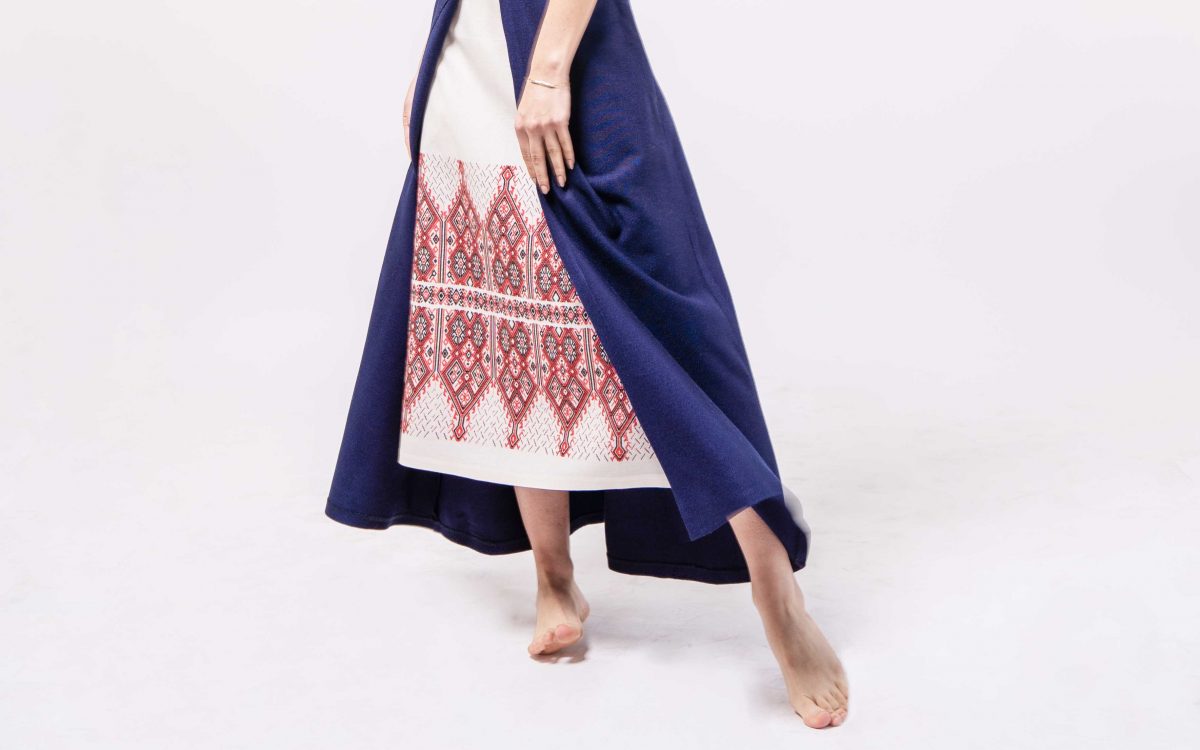By Simos Kavalieratos
If Steve Harvey, in a game of Family Feud, asked you to list things Greece is famous for, chances are that Byzantium wouldn’t be part of your guesses. Designer and founder of the fashion brand Palaiologue Vicky Hioureas is on a mission to change that. With elegant lines, geometrically diverse designs, and patterns with a touch of folklore, Hioureas modernizes a past of Greece that is in danger of being wiped out of our collective memory.
“When I think of rich fabric colors and nice flowing styles of dress – Byzantium comes to mind. That was really where significant silk production came about and became so famous. So it was imperative in my creative work to show a continuity between a Byzantine past. I thought that we could start talking about Byzantium a bit more,” she explains.
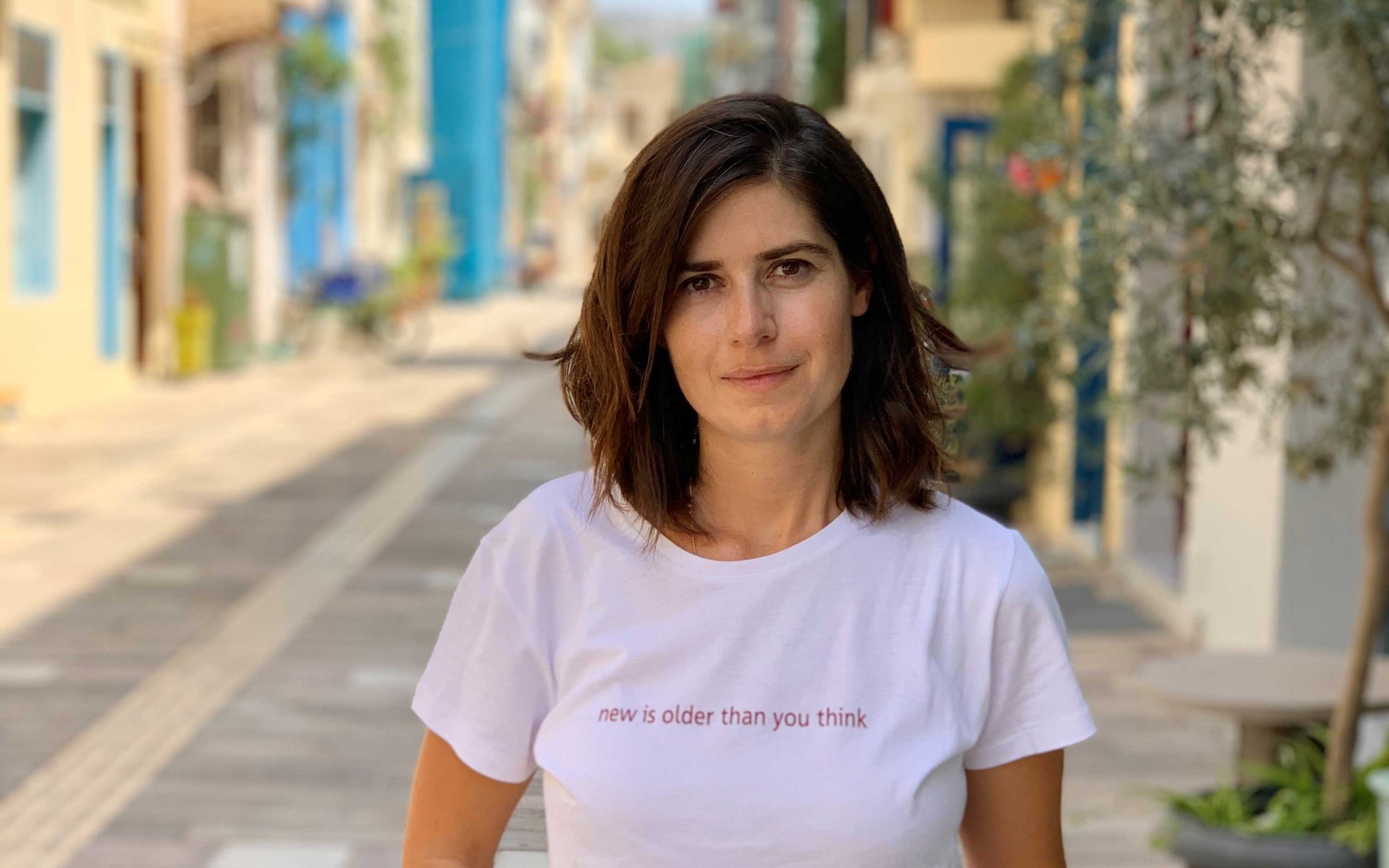
Born from Greek immigrant parents and raised in the Southern part of California, Hioureas always kept in touch with her Greek roots. From spending all her summers in her grandmother’s goat farm in Greece to participating in traditional dance events through her local church in the USA, Greek traditions and culture have always been a source of inspiration. So much so that she decided to pursue an academic career in Byzantine Studies – this year she is wrapping up her Ph.D. at Princeton.
So how come a scholar traded books for fabrics? “I couldn’t understand why Greek women, like myself, were wearing clothes that are completely anonymous and disconnected from this vibrant heritage that we have. I couldn’t understand why we were washing all that away and not focusing on it – not showing it. So, I decided to do something about it,” she explains.
Well versed in sewing techniques, she experimented by revamping clothes in her own wardrobe, garnishing them with folkloric touches. On Palaiologue’s website, we can even watch Hioureas practice her loom weaving skills, as an older Greek woman sings a traditional folk song – although not devoid of performative elements, it echoes authenticity.
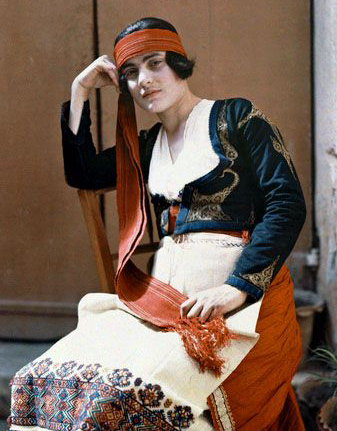
© Palaiologue
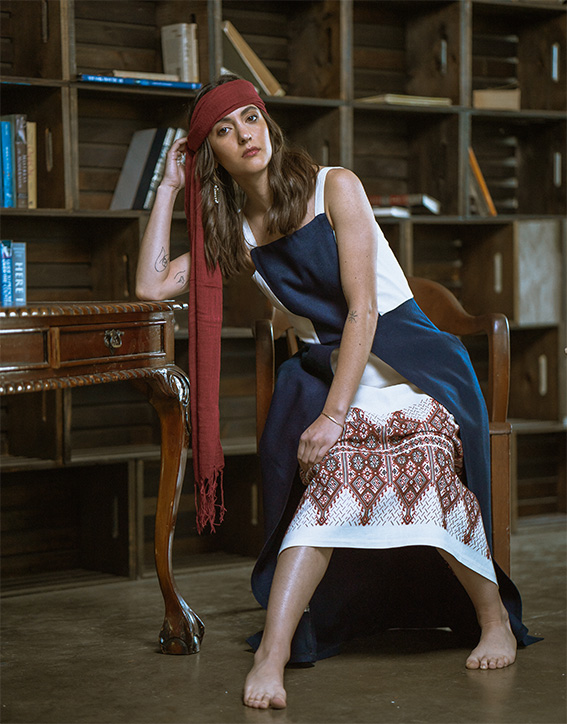
© Palaiologue
Understanding that there is a thin line of separation between folkloric inspiration and wearing a costume, Hioureas aims to give new meaning to traditional designs.
“You can’t just wear jeans and pair them with a traditional jacket from Epirus. It just seems inorganic to me – a bit put on.” Instead, she gets her creative juices flowing by asking the question, “How would these women of the past incorporate these elements in a modern context? How would they wear those designs and patterns if they were going to the office or for coffee?”
Hioureas is fed up with the absence of practicality that is permeated throughout current womenswear designs. “Pockets, pockets, pockets,” she exclaims. Inspired by her late grandmother’s fathomless pockets that fitted all kinds of different things, she hopes to create evolutionary designs that satisfy the needs of a 21st-century woman.
To critics who demand that elements of tradition remain intact, Hioureas response, equipped with her scholarly knowledge, is that those traditional clothes are already a product of reinvention. First, shipping men brought back fabrics and motifs from foreign lands destined for the wealthy and the ruling classes. Then the rest of society, per the tenets of social psychology, copied and acculturated the foreign designs into their existing wardrobe.
“These fabrics and motifs aren’t necessarily transferred from Ancient Greece or Byzantium; they were constantly being transformed. You see Kanye West wearing something, and then you want to wear that same brown jacket. It is how things work. People, even back then, were inspired by the elite,” she explains.
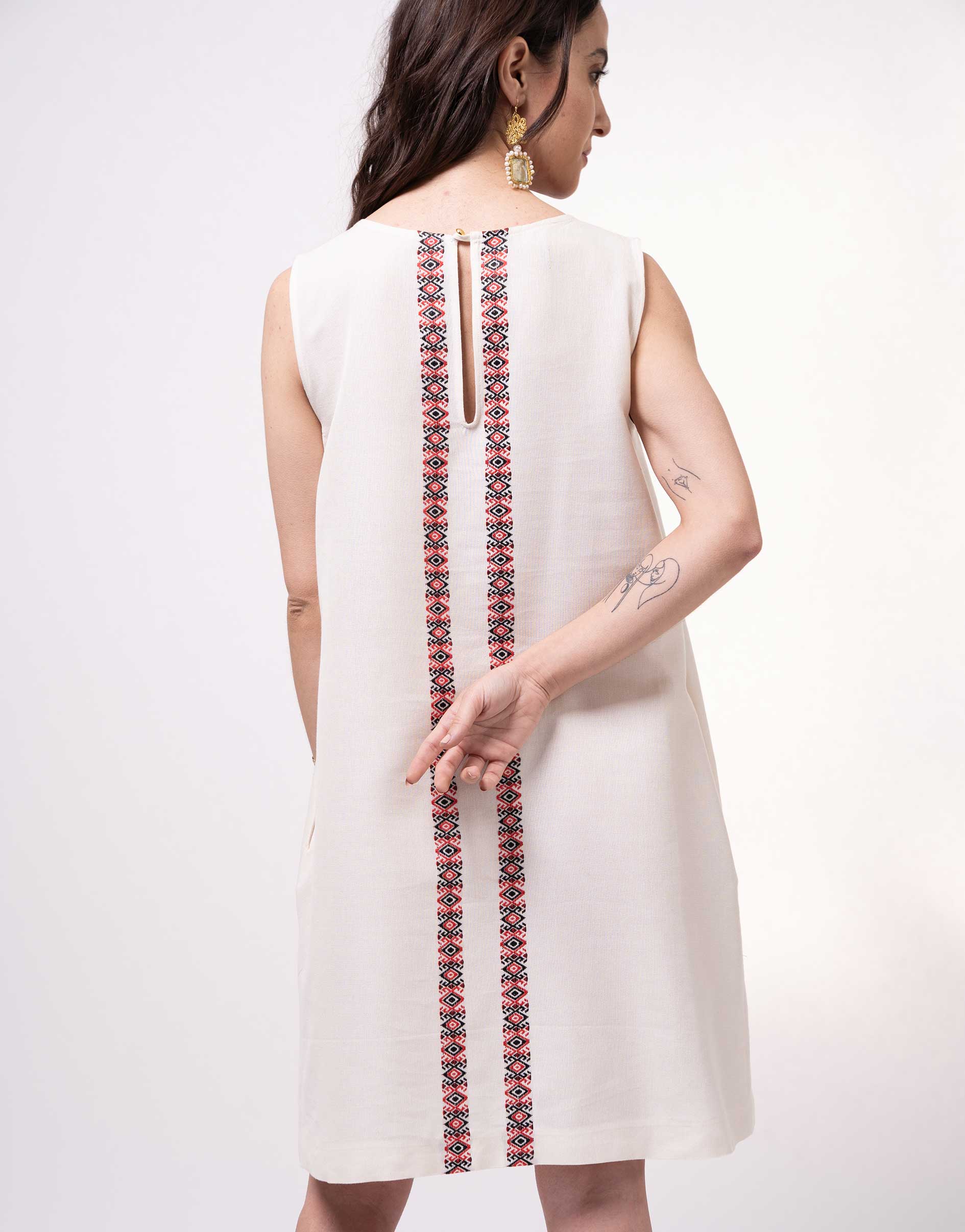
© Palaiologue
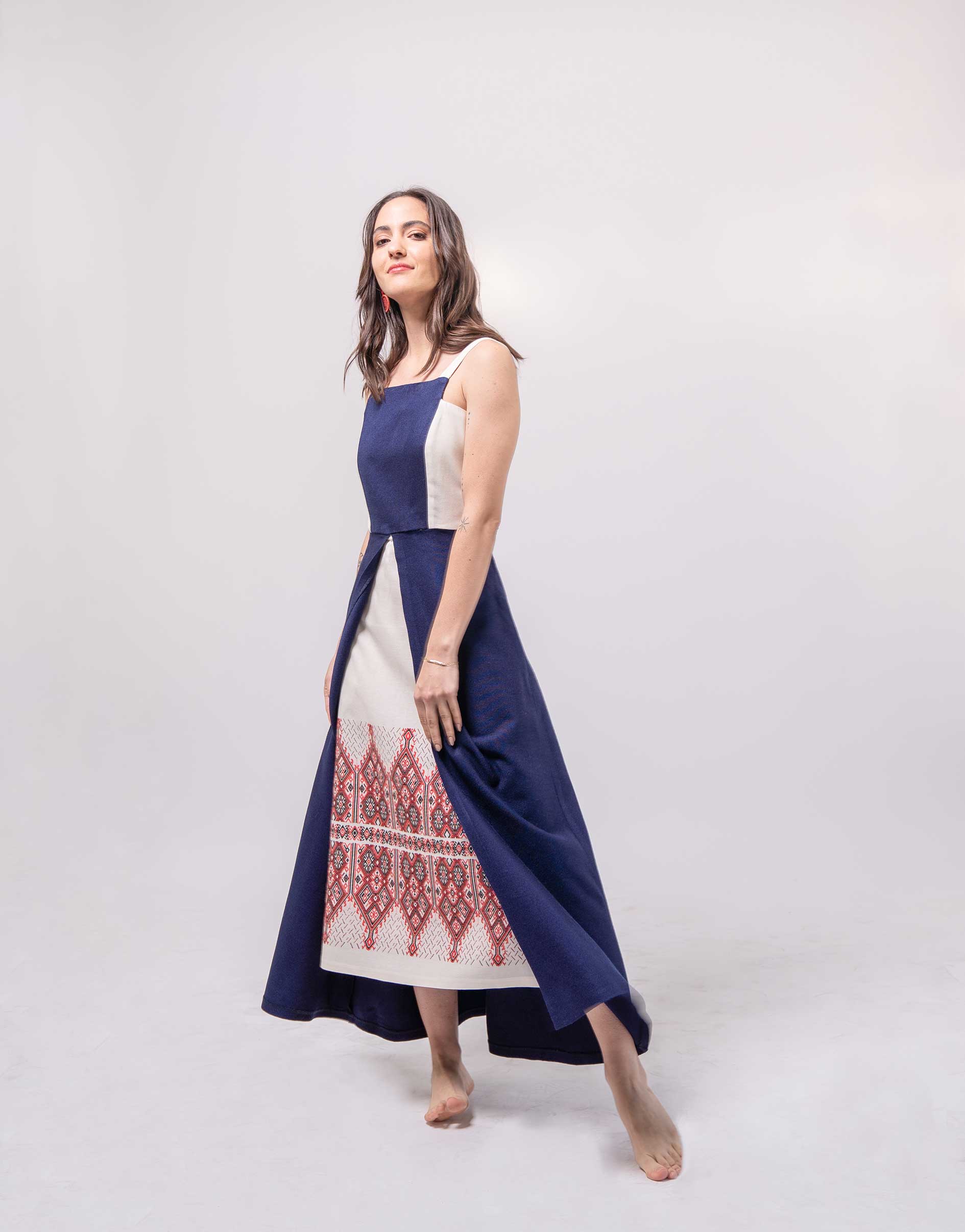
© Palaiologue
Despite its autocratic name, however, Palailogue is not intensely preoccupied with the elite. Instead, the lives of ordinary folk serve as the main inspiration. Although other Greek fashion brands have made an effort to connect with a simpler side of the period, the source of the patterns and designs often remain unknown to the consumer. They seem to have no story behind them.
“The perspective that I wanted to offer was, not anonymity-not a vague folk. I wanted it to be a very specific folk. I want you to know where it is coming from. I want you to know who these people were,” she explains.
Alongside your order, Hioureas includes a thank you note printed on a photo that depicts a Cretan woman from the 1930s, dressed in her everyday clothes – a tribute to the origins of her inspiration.
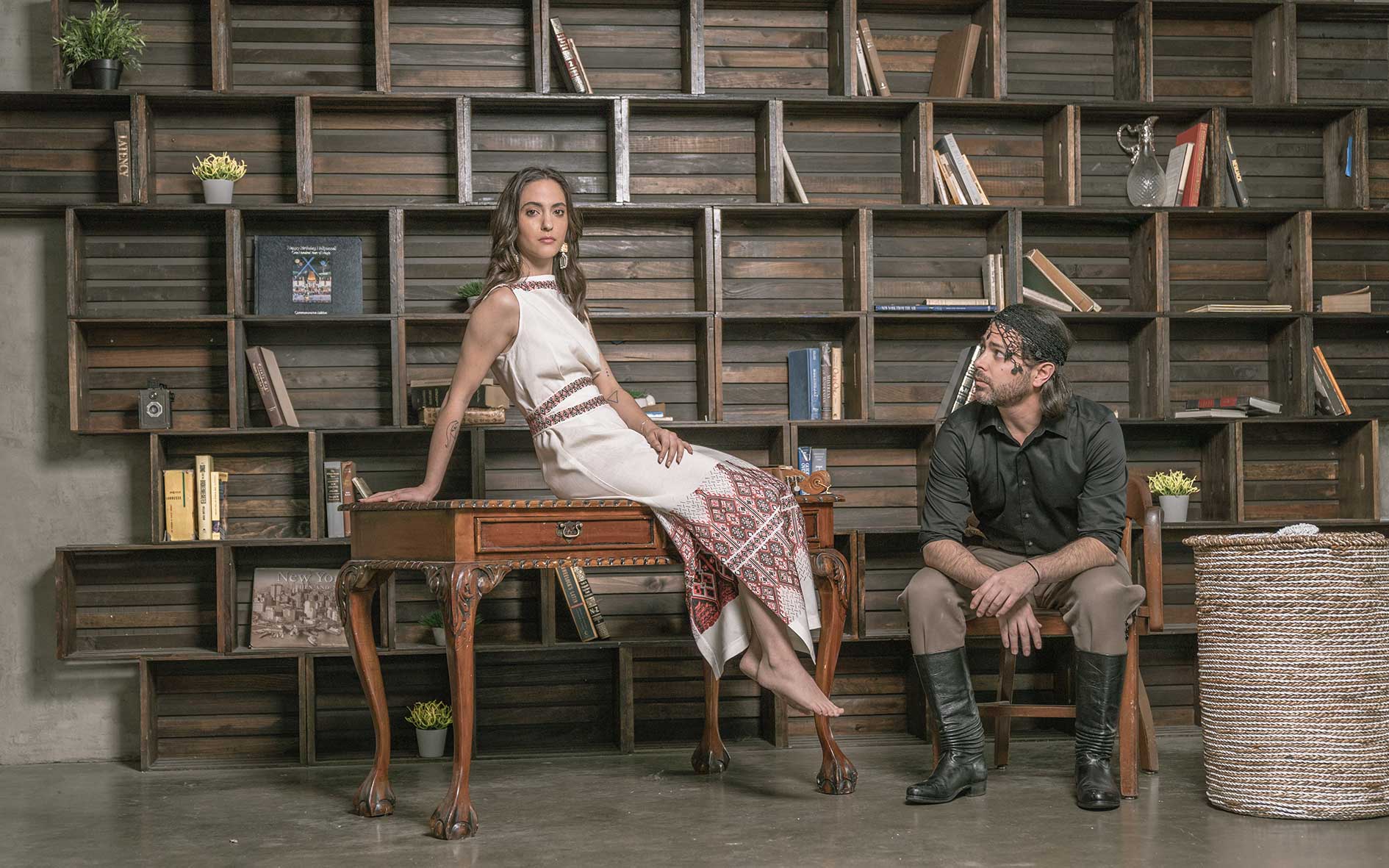
© Palaiologue
One would expect that Hioureas would choose a place connected to her genealogical origins as an ode to her roots. However, that is not the case. Palaiologue’s first collection is inspired by the traditional dresses of the village of Anogia, Crete.
On a visit to Crete, Hioureas observed that contrary to most other parts of Greece, Cretan youth was still very much involved in tradition. They would dance and lyrically rearrange songs based on traditional melodies. “I wanted to tip my hat to the fact that Cretans create and deliver their tradition – they live their folk. It’s not something that’s performed. That is what I want to do with my clothing line as well. I want to incorporate folk and make it organic-have it grow and evolve,” she explains.
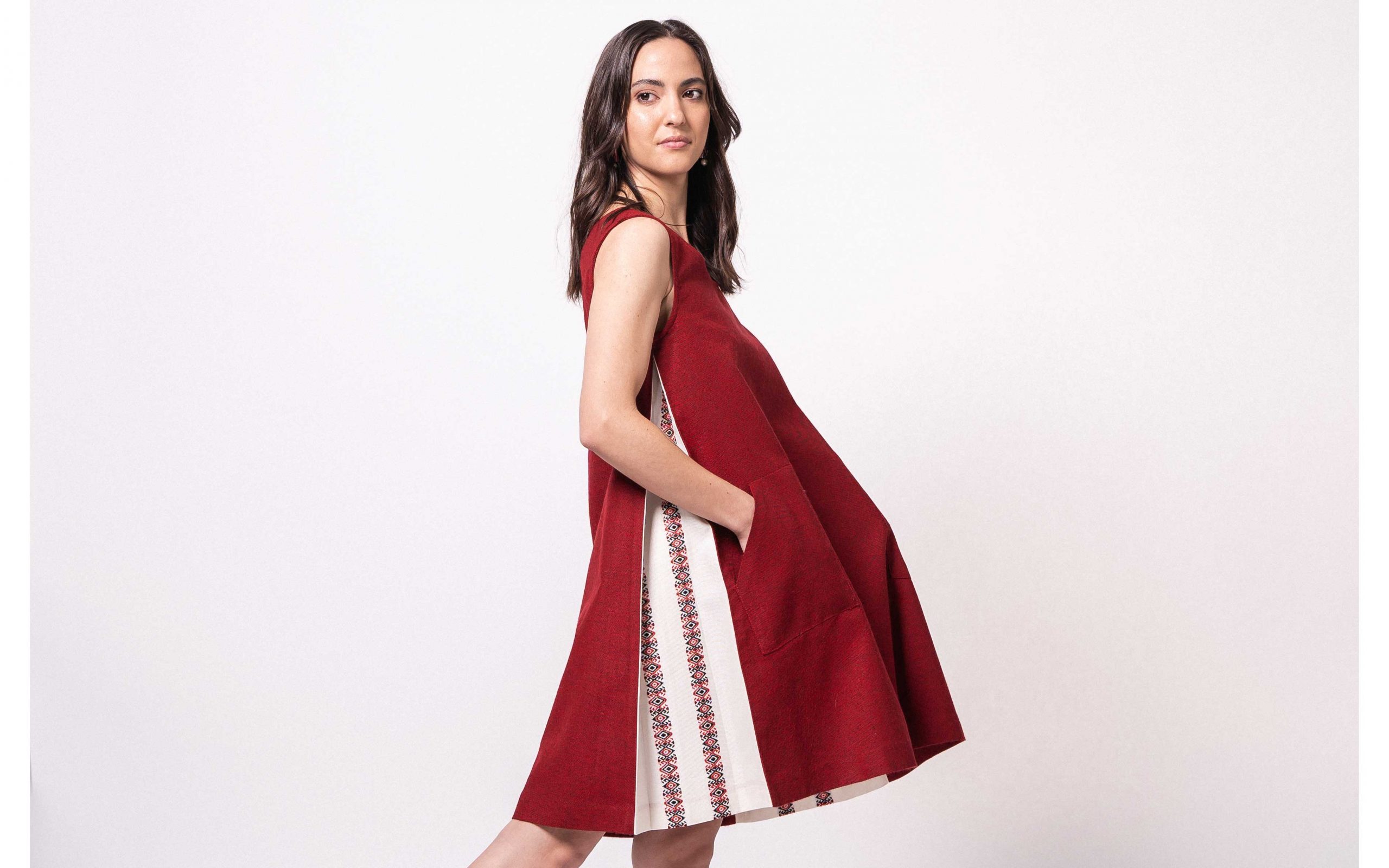
© Palaiologue
During this creative process, not everything was smooth sailing. Hioureas aspired to create something that would involve young women throughout all aspects of production. “I wanted it to be a little bit more about a feminist philosophy as well, where it was just a group of young women getting together and producing art.” Nevertheless, she confessed that it was challenging to find young people with sewing skills. As young people follow trendier professions, arts of the past slowly fade away to the point of extinction.
Still, staying true to her vision, all clothes are produced in Greece, and she is proud to say that she knows everyone involved by their first name. Witnessing around her a ‘gourmification’ of Greek culture, she remains hopeful. “With this return to a more artisanal lifestyle and the desire to connect with our roots, people will likely get involved in sewing again,” she says.
So what does the future look like for Palaiologue? “I eventually want to get to the point where anybody who follows Palaiologue will find out the geography of Greece through each season. We’ve gotten to know Crete this season. Next season we’ll get acquainted with another region. Hopefully, I’ll be able to highlight and also incorporate these traditions into a modern form of dress that all women can enjoy.”

